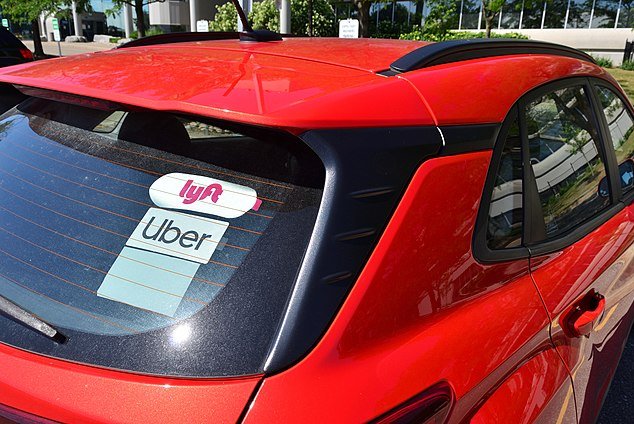Thu., December 9, 2021

TORONTO — Ontario should develop a worker benefits plan that is not tied to employers, set up a job board for gig work, and force greater transparency in gig work contracts, a new report on the province's changing employment landscape recommends.
The report from a committee of experts tasked by the government with addressing labour market disruptions from COVID-19 also recommended creating a "dependent contractor" category for app-based gig workers with guaranteed employment rights, including severance pay and minimum wage.
The final report from the Ontario Workforce Recovery Advisory Committee, including 21 recommendations, was made public Thursday.
"The recommendations are about designing a policy regime that takes into account how changes in technology and COVID, which coincide, are changing the workplace," said Rohinton Medhora, chair of the committee that began its work in June.
Labour Minister Monte McNaughton said he was impressed with the recommendations and would consider all of them.
Of particular interest, he said, was the recommendation that the government look into developing a portable benefits plan that’s tied directly to workers, not their employers.
"This is one that's a priority for me and I really want to move forward with looking at this seriously,” McNaughton said in an interview Wednesday.
The report said a portable plan might see the benefits administered through "an independent body, through government, the private sector or some combination," and would support worker mobility, give certainty to their futures and potentially help businesses attract more workers.
McNaughton said he’s "excited" by the concept, which he said could cover gig workers and others in restaurant and retail jobs who don't have health, vision or dental benefits.
Medhora, the committee chair who is also president of the Centre for International Governance Innovation, said the portable benefits idea goes "hand-in-hand" with the advice to better ensure rights for gig workers, and also addresses the changing nature of careers as people hold more jobs through their lives.
The committee recommends appointing an expert to study how the program would best work.
The group's short consultation period over the summer and the makeup of the committee, which didn't include any worker or union representatives, has sparked concerns from worker groups that the recommendations lack fulsome research and could skew towards the interests of large employers like Uber, leaving gig workers more vulnerable.
The Ontario Federation of Labour wrote in submissions to the committee of serious concerns about what it called a "rushed and deeply flawed" consultation process that didn’t include public hearings.
McNaughton said he wanted the work completed quickly because "there is an urgent need to act" in response to economic changes from the pandemic. He also pointed to consultations with gig workers and said he would welcome more feedback now that the report is published.
Uber spent the last year asking the province to require app-based gig employers to accrue self-directed benefit funds that can be dispersed to drivers for prescriptions, dental and vision care and provide safety training and tools like reflective vests. The proposal called Flexible Work+ would not designate gig workers as employees and does not include minimum wage or severance pay requirements.
Uber is still reviewing the committee's recommendations, spokesperson Laura Miller said.
"Given the diverse and complex needs of drivers and delivery people, a comprehensive policy plan is the only way forward," she wrote in an email.
Brice Sopher, vice-president of Gig Workers United, said he was alarmed by how many similarities there are between the committee's recommendations and Uber's pitch, which many workers have long denounced.
His organization feels the "dependent contractor" category is unnecessary and workers should instead be recognized as employees.
"These portable benefits and new category is a lowering of the bar for all workers because once it is legislated, there is very little stopping other workplaces from transforming their workers into this new category," said Sopher, who couriers food for UberEats and works as a DJ.
"So we are sad for ourselves and we fear for the long-term."
The committee's "dependent contractor" recommendation suggested creating that worker category through the Employment Standards Act "or elsewhere." The recommendation said those workers should have basic employment rights like termination pay, minimum wages, benefits, pay stubs, regular wage payment and notice of termination with severance pay entitlements.
The committee further said gig platform companies that operate in Ontario should be required to provide basic, clear and transparent contracts with information on payment, penalties, suspensions or pay deductions.
The report also said contracting companies should be forced to state they are complying with employment standards, specifically on worker classification, so there is no ambiguity over liability.
It also suggested piloting a virtual platform "that matches supply and demand for various types of gig and contract work," which could start with some occupation types and expand to more if found to be effective.
It also recommended a dedicated communications strategy promoting the province as a desirable place to work, and giving greater clarity to the definition of "independent contractors."
The Progressive Conservative government has already acted on some of the committee's recommendations, which it saw in an interim report.
Labour legislation that passed this month requires medium-sized workplaces to have policies on employees disconnecting digitally after work hours and limits non-compete clauses. It also requires that businesses give delivery drivers access to washrooms — something that wasn’t explicitly recommended by the committee but came up repeatedly during consultations, McNaughton said.
— with files from Tara Deschamps.
This report by The Canadian Press was first published Dec. 9, 2021.
Holly McKenzie-Sutter, The Canadian Press

Lyft and Uber logos are shown on a car. The European Commission proposed a directive Thursday that could turn gig workers for ride-share companies and others into employees. File Photo by Raysonho/Wikimedia/UPI
Dec. 9 (UPI) -- The European Commission announced initial steps that would turn independent contractors, or gig workers, into employees, giving them traditional labor rights and benefits enjoyed by other full-time employees.
The move would target such companies as ride-sharing business Uber and various delivery jobs but could have a wide-ranging effect on numerous other industries as well.
"The proposed directive seeks to ensure that people working through digital labor platforms are granted the legal employment status that corresponds to their actual work arrangements," the European Commission said in a statement about the directive. "It provides a list of control criteria to determine whether the platform is an 'employer.'
"If the platform meets at least two of those criteria, it is legally presumed to be an employer. The people working through them would therefore enjoy the labor and social rights that come with the status of 'worker.'"
RELATED Judge rules California's new law for app-based drivers is unconstitutional
The directive said the "worker" status, would give that person the right to a minimum wage, collective bargaining, working time and health protection, the right to paid leave or improved access to protection against work accidents and unemployment and sickness benefits among other benefits.
"The clear criteria the commission proposes will bring the platforms increased legal certainty, reduced litigation costs and it will facilitate business planning," the commission said.
The directive could change the employment status of up to 4.1 million gig workers throughout the European Union. It said more than 500 digital platforms using gig workers generated revenue of $15.8 billion in 2020.
RELATED Labor Dept. terminates Trump-era gig worker rule to favor contractors
Uber has pushed back, saying the directive will put jobs and the business models at risk, shrinking revenues. It said those services have proven vital during the pandemic.











